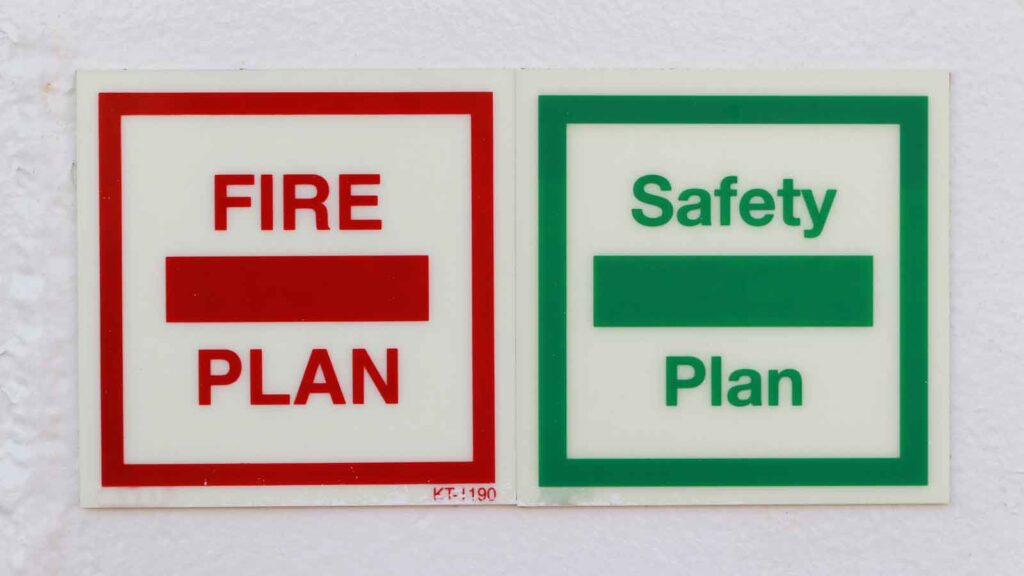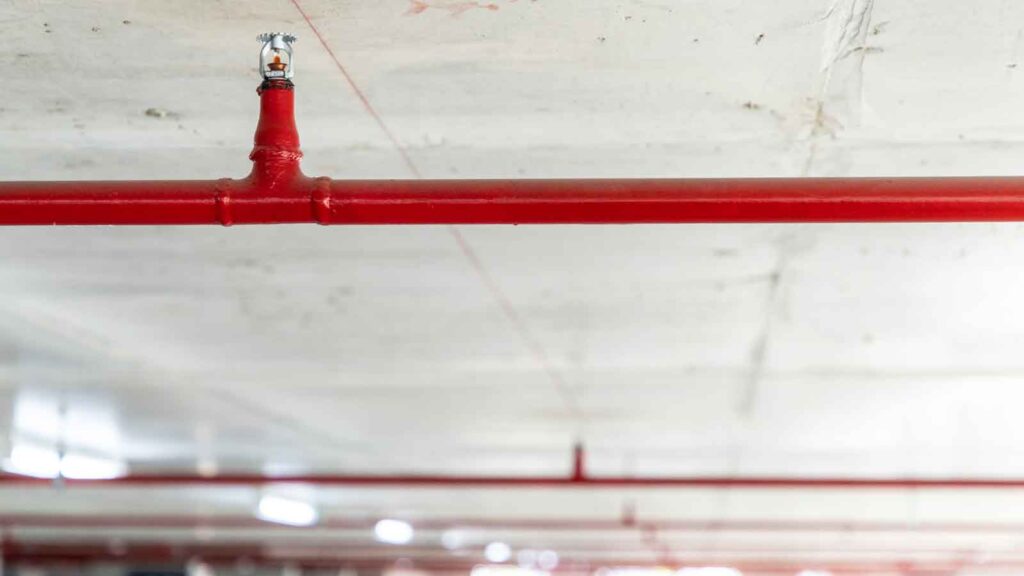Many business owners face the challenge of keeping their premises safe while juggling tight budgets, staff shortages, and regulatory changes. You might feel unsure about what’s legally required or whether your building’s fire protection measures are actually sufficient.
Maybe the last inspection revealed gaps, or maybe there hasn’t been an inspection at all. These uncertainties can grow into serious risks when your fire sprinkler system is outdated or improperly maintained.
In this blog, we’ll break down what happens when those risks are ignored. You’ll learn about the real-world consequences of non-compliance with fire safety regulations and the steps you can take to ensure compliance. We’ll also share how professional support can help you stay ahead of these requirements with confidence.
What Are Fire Safety Regulations and Why Do They Matter
Fire safety regulations are laws and standards that define how buildings should be designed, maintained, and operated to reduce the risk of fire. They apply to nearly all types of buildings, including offices, warehouses, schools, and residential complexes. Local authorities and fire departments enforce these regulations to keep people and property safe.
Compliance involves several layers. It’s not just about having a fire extinguisher in the corner. It means evaluating risks, preparing for emergencies, installing systems like alarms and sprinklers, and keeping escape routes clear. Every building has different requirements depending on its size, function, and occupancy.
For deeper context, fire safety regulations matter because:
- They reduce the chances of fire incidents through preventative measures.
- They ensure people can evacuate safely if a fire does occur.
- They protect businesses from legal and financial penalties.
- They help maintain valid insurance coverage and lower premiums.
Staying compliant isn’t just about avoiding fines. It’s about creating a safe place to work, visit, or live. And it starts with understanding what the rules require and following them consistently.
The Consequences of Non-Compliance with Fire Safety Regulations
Ignoring fire safety regulations exposes a business to risks and can dismantle everything that’s been built. Whether it’s a small oversight or a major gap in safety procedures, the fallout can be severe and far-reaching.
Let’s break down what can happen when fire safety rules are not followed.
Legal Penalties and Criminal Liability for Violations
Failing to meet fire safety regulations often results in legal consequences. Regulatory authorities conduct routine and complaint-based inspections, and if they find violations, penalties follow. These can range from fines to full-scale prosecutions, depending on the severity of the breach.
Business owners, site managers, or anyone responsible for fire safety can be held personally liable. Ignorance of the law is not a defense. When violations involve life-threatening conditions or repeat offenses, authorities may escalate the matter to criminal court.
For instance, if a business consistently ignores fire risk assessment recommendations or fails to maintain alarm systems, it could face legal action. In extreme cases, especially where injuries or fatalities occur, jail time becomes a possibility. The legal costs alone can damage a business’s future.
Financial Impact, Including Property Damage and Insurance Issues
Fires can cause irreversible property damage. Structural losses, equipment replacement, and interruption to daily operations all carry a price tag. Even temporary shutdowns result in lost revenue and disrupted customer relationships.
Businesses that don’t comply with fire safety standards may also be at odds with their insurers. Policies often include clauses requiring current fire safety documentation and proof of equipment maintenance, which gives insurers legal grounds to deny claims.
This means the financial burden of rebuilding falls entirely on the business. Even if the insurance pays out partially, premiums usually rise significantly after an incident. For small to medium-sized businesses, this can derail long-term financial stability.
Human Safety Risks and Potential Loss of Life
The safety of employees, customers, and visitors depends heavily on working safety systems. If a fire occurs and alarms don’t sound, exits are blocked, or no one knows how to respond, the results can be tragic. Fire doesn’t wait for people to get organized.
Non-compliance directly increases the risk of injury or loss of life. Burns, smoke inhalation, and trauma are common in poorly prepared buildings. Panic spreads quickly when people don’t know how to escape or can’t locate exits.
This highlights the importance of choosing the right protection system and ensuring it’s always functional. Fire safety isn’t about avoiding penalties; rather, it’s about protecting lives. Regular training, clear signage, and working alarms can make the difference in a high-pressure moment.
Regulatory Enforcement Actions and Business Closure Orders
Fire safety regulators don’t always wait for an incident to act. During inspections, if they find serious breaches, they can issue enforcement notices immediately. These notices require swift corrective action and may come with deadlines and follow-up visits.
In cases where violations pose immediate danger, authorities can order a full or partial business shutdown. This could involve closing off specific areas or halting all operations until the issues are resolved. These actions affect revenue, staffing, and day-to-day function.
Reopening after a shutdown isn’t always simple. Businesses may need to invest in repairs, system upgrades, and even staff retraining. These processes take time and money, all while the business remains offline and under scrutiny.
Reputational Damage and Long-Term Business Consequences
Public trust is hard to earn and easy to lose. A fire safety violation, especially one that becomes public, can seriously damage a company’s reputation. Even without injury or loss, people notice when a business is cited for unsafe conditions.
Clients and partners may choose to walk away rather than risk association with a careless company. Employees may also feel unsafe or undervalued, leading to higher turnover. Once doubt creeps in, it spreads fast.
Recovery takes more than fixing the problem. It involves regaining confidence, often through overcommunication and transparency. The cost isn’t just in money, it’s in time, trust, and credibility, which can take years to rebuild.
How to Properly Comply with Fire Safety Regulations
Complying with fire safety regulations starts with understanding the specific requirements that apply to your building and business. Each facility is different, so there’s no one-size-fits-all checklist. Risk assessments, equipment installation, and staff training should all reflect the real conditions of your premises.
To ensure proper compliance, businesses should:
- Conduct a full fire risk assessment with qualified professionals.
- Install and regularly maintain fire alarms, extinguishers, and emergency lights.
- Keep evacuation routes clear, well-marked, and accessible at all times.
- Schedule regular fire drills and document staff training.
- Maintain accurate records of inspections, servicing, and safety updates.
Following these steps not only meets regulatory expectations but also demonstrates a commitment to safety. When done consistently, the benefits of investing in fire protection measures become clear, as it provides fewer risks, smoother inspections, and better insurance coverage.
Compliance doesn’t have to be overwhelming. With the right planning and support, you can meet your obligations, protect your people, and keep your business running smoothly. Everyone benefits when fire safety is taken seriously.
How We Can Help You Achieve Fire Safety Compliance
At Kimble & Company, we help businesses stay compliant with fire safety regulations through dependable, hands-on fire protection services. We know what’s required, and we make sure you’re covered from every angle, whether it’s assessments, equipment, or staff training.
We start by conducting a full fire risk assessment tailored to your space and operations. Then, we create a clear action plan that addresses your specific risks and compliance gaps. We also handle your documentation, making sure everything is ready for inspections and audits.
Our team trains your staff so they know exactly what to do in an emergency. We also offer ongoing support, keeping your fire safety plans up to date as your business evolves. With our fire protection services, you can stay focused on running your business, knowing your compliance is in good hands.
Call us today and let’s start protecting your property!



